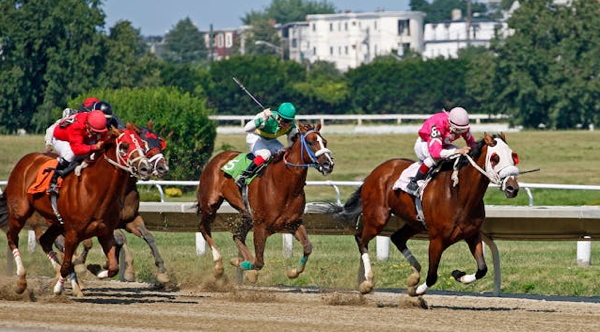 |
RacingBetter News |
| Wednesday 4th June 2025 | |
Belmont Stakes and St. Leger Stakes: A Look at Premier Races in the US and UK

The final leg of the Triple Crown is near on both sides of the Atlantic. In the United States, the Belmont Stakes, set to take place at Belmont Park in New York on June 7, 2025, closes out a fast-paced three-race series. In the United Kingdom, the St. Leger Stakes, at Doncaster Racecourse in England on September 13, wraps up a more spaced-out but equally historic sequence.
Though held in different countries and under different conditions, the Belmont Stakes and the St. Leger Stakes share a rare position in the sport. Each serves as the final challenge in a Triple Crown series, with only a few horses ever attempting a full sweep. Both races hold a key place in their national calendars but take very different approaches to that role. Let’s look at how they compare.
1. Race Origins and History
The St. Leger Stakes is the older of the two, first run in 1776 in Doncaster. It was created by Anthony St. Leger and soon became one of Britain’s most prestigious races. Over time, it helped define the British racing season. The Belmont Stakes, by comparison, began in 1867. It was named after financier August Belmont and quickly became important across the American racing scene.
While both are steeped in tradition, their development reflects different racing cultures. The St. Leger was shaped by Britain’s long-standing focus on breeding and endurance. The Belmont Stakes became a showcase for speed and power, evolving with the American love for grand sporting spectacles. Their histories continue to influence how each race is run and celebrated today.
2. Location and Track Conditions
Belmont takes place at Belmont Park in New York, while St. Leger is held at Doncaster Racecourse in England. Belmont features a left-handed dirt track, which can favour horses with strong early speed and prior dirt experience. Conversely, Doncaster has a right-handed turf track with softer ground and an undulating layout, often suiting horses with stamina and good balance over longer distances.
The weather also affects track conditions. The St. Leger is run in September, when rain can make the turf softer. The Belmont Stakes takes place in June, often under dry and hot conditions. These elements influence how horses are trained and which types are favoured. Trainers often prepare differently depending on the track's demands.
3. Race Distance and Timing
The Belmont Stakes is known as the longest race in the American Triple Crown series. It covers 1.5 miles. The timing makes it the final leg, often carrying the pressure of completing a Triple Crown run. Its length tests stamina, especially for horses that have already raced in the Kentucky Derby and Preakness Stakes.
The St. Leger Stakes is even longer, covering around 1 mile, 6 furlongs, and 132 yards. It comes later in the year, usually in September, and finishes the British Triple Crown series. Few horses attempt all three UK legs today, but the St. Leger remains a major event. Its place in the calendar gives trainers more flexibility in preparing their runners.
4. Betting Culture and Practices
Betting is a big part of both events, but the styles differ across the Atlantic. In the UK, decimal odds are standard, and bookmakers line the course with stalls. Tote betting is also popular. In the US, fractional odds are used, and most bets go through a pari-mutuel system. Wager types vary, too, though win, place, and exacta remain favourites in both nations.
Belmont Stakes odds often reflect how tough the race is to predict. The long distance and field depth can lead to major shifts before the start. Punters watch closely for last-minute changes. In the St. Leger, turf conditions and past form usually guide betting trends. While the approach may differ, both events draw serious attention, time, and money from racing fans.
5. Entry Requirements and Field Composition
Both races are restricted to three-year-olds, but other conditions vary. The Belmont Stakes is open to both colts and fillies, with fillies carrying less weight. The St. Leger follows a similar approach but often sees more balanced entries between sexes. Field size is another point of difference. The Belmont usually draws fewer runners compared to the typically larger St. Leger fields.
Qualifications and prep races also differ. Horses aiming for the Belmont Stakes may come from the Kentucky Derby or Preakness. The St. Leger often features horses that have run in the Epsom Derby or Grand Prix de Paris. These differences shape the field’s competitiveness and affect betting strategies and public interest.
Which to Choose?
Fans who enjoy fast-paced racing, big crowds, and high media buzz often prefer the Belmont Stakes. On the other hand, those who value tradition, turf racing, and long-distance tests are more likely to appreciate the St. Leger Stakes. Each race offers its own kind of excitement, depending on what you love most about the sport.







